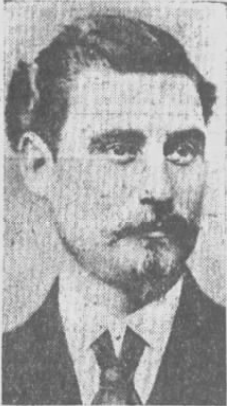

Partner Eugene D'Ameli
Queer Places:
700 Macon St, Brooklyn, NY 11233
Green-Wood Cemetery
Brooklyn, Kings County (Brooklyn), New York, USA
 John
Unsworth (January 12, 1844 - March 14, 1924) was once known to Brooklyn as a member of the famous Hooley
Minstrels that held forth in Hooley's Theatre, at Court and Remsen street in
the late 1860's and the 1870's.
John
Unsworth (January 12, 1844 - March 14, 1924) was once known to Brooklyn as a member of the famous Hooley
Minstrels that held forth in Hooley's Theatre, at Court and Remsen street in
the late 1860's and the 1870's.
For the last thirty-five years of his life, years which saw the complete decline of the once supremely popular form of entertainment, John Unsworth lived only in the past. The only person he could take with him into it was Edward Leroy Rice, himself the son of a minstrel, William Henry Rice, who also played at Hooley's.
Though the black-face entertainment was a purely American invention, John Unsworth and his more famous brother, James, were born in Liverpool, the former in 1844. They moved to the United States at about twenty, some years after the first minstrel shows had seen the light. James Unsworth immediately took to the comparatively new art and became a headliner in it, with his partner of later years, "Eugene D'Ameli". John Unsworth was never as popular as his brother.
Then began a rich and varied experience of about thirty years. The rage for minstrel entertainments spread and reached to its height. The Unsworths, with other minstrels, journeyed back and forth over the country, a real adventure in the 1860's. They were in California during the days of the gold rush and benefited gloriously from the generosity of the fortunate miners. They went abroad for a short time, where the race for American minstrels spread, but spent most of their career in the United States and much of it in Brooklyn.
The "stump speech" vaudeville turn was invented by John Unsworth. Most of the dialogue was not rehearsed, but impromptu. And the main attraction were the rich, mellow voices that were the one obsolute necessity for a would-be ministrel, and cleverness of invention. The number of men in a show at first was comparatively few, and fifteen was advertised as a "monster performance." This was the sort of thing that held sway at Hooley' on Court and Remsen streets in the 1860's and 1870's. William Henry Rice, Eph Horn, J.J. C. Herman, Carroll Johnson. Luke Schoolcraft, known as the greatest of negro delineators; Stevie Rogers, the Unsworths, these were names to conjure with at Hooley's. All Brooklyn knew them then, as did most of the rest of the country's the theatregoers.
John Unsworth was one of the last to go. Some years after the death of his famous brother, in 1875, he retired, with a comfortable income. He made his home with "Eugene," his brother's beloved partner, at 700 Macon Street, Brooklyn. After the latter's death, his niece, Miss Anna Ameli, took care of the old man, whose greatest pleasure was to chat of old times with the son of his contemporary. With great animation, he would relate anecdotes of his one-time associates, and his face would light at the recollections. And then, "But he died in 1868." Unsworth would sign, and his face would become an old man's once more.
He knew that the art which in his prime was one of the most respected on the stage, had fallen into decay, that people wanted "girl shows" and would not sit through an evening of minstrel performance. This, he blamed on the qualify of the talent that entered the field now, which has no resemblance to the stage genius that once gave it real artistic life. But he realized it was natural, with the drawing of this talent into the varied lines of theatrical endeavor, and the call of greater salaries.
My published books: